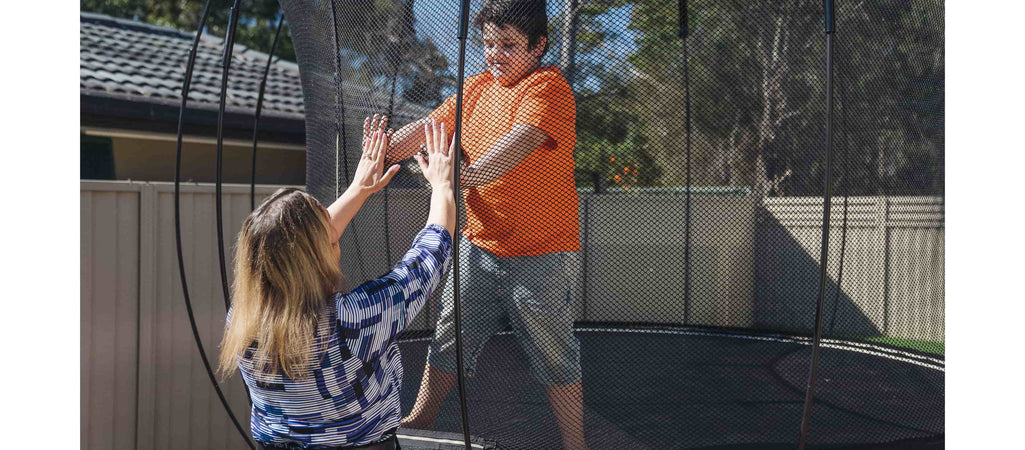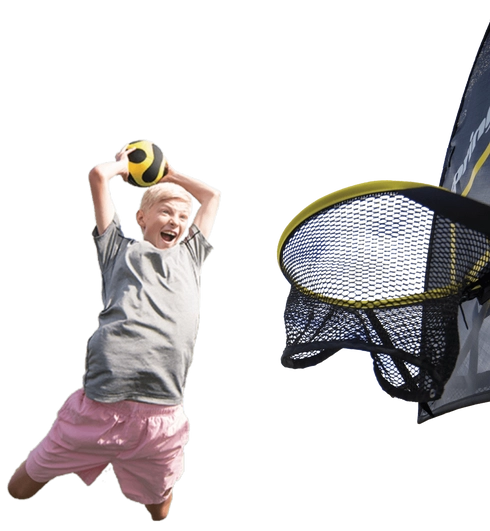5 Best Trampolines for Children On the Autism Spectrum
Explore this year’s guide to the best trampolines for children on the Autism Spectrum. Prioritize safety and sensory development for your child with these top options!
min read

Finding the best trampoline for children on the Autism Spectrum is crucial.
Autism Trampoline Therapy has proven to help individuals with ASD (Autism Spectrum Disorder) develop sensory, motor and educational skills, among others.
To reap these benefits, though, you need the right trampoline. The right trampoline will have a combination of safety, quality and durability features.
We are experts in trampoline safety, having built the world’s safest trampolines.
Below are our expert picks for the best trampolines for individuals on the Autism Spectrum, including indoor and outdoor trampolines.
5 Best Trampolines for Children on the Autism Spectrum
Below are our best trampolines for kids with ASD. These include a mix of toddler trampolines, mini-trampolines and outdoor trampolines.
We prioritized trampoline safety among all other features, making sure to list trampolines at varying price ranges so you can find a fit no matter your budget. User reviews were also heavily weighed as a factor for inclusion.
Note: These are not listed in order of quality. We’re starting with the smallest size of trampolines (toddler trampolines) and working up to the larger sizes.
1. Fold-and-Go Trampoline

Key Features:
- Easy to move (weighs 18 pounds).
- Simple to store.
- Specifically made for physical stimulation and sensory input.
- Good fit for kids with sensory integration disorder, ADD and ADHD.
- Includes padding around the mat.
- Holds up to 150 pounds.
- Made for children ages 3+
Cost: $199.99
User Reviews: 4.6/5 (Amazon, 1,076 reviews)
Photo courtesy of Fun & Function.
Did you know? According to the National Institute of Child Health and Human Development, early interventions for ASD (2-3 years old) have a better chance of being effective in the long term because a young child’s brain is still forming.
2. Clevr 7ft Kids Trampoline

Key Features:
- Can be used indoors and outdoors.
- Provides adequate jumping space for an indoor trampoline.
- Includes arched zipper door to keep kids from tripping while entering/exiting.
- Foam padding on the poles is waterproof and helps absorb the impact of jumpers.
- Powder-coated steel frame is a good trampoline quality feature.
- Assembly is said to be fairly simple.
- Suitable for Children Ages 3-10.
- Holds up to 150 pounds.
(While this Trampoline comes with padding around the springs, make sure to check periodically to see if any gaps have been created that expose the springs. They are inside the enclosure net, and this could be a potential safety hazard).
Cost: $249.99
User Reviews: 4.7/5 (Amazon, 1,752 reviews)
Photo courtesy of Amazon.
3. Fit Bounce Pro II Rebounder

Key Features:
- Suitable for kids, adults and all fitness levels.
- Comes with a Rebounding DVD with rebounding workouts included.
- Can add a Flexi Bounce Therapy course specifically designed with neuroinclusivity in mind.
- Built with high-quality features, including high-grade steel, a non-slip mat, spring-loaded legs and twice as many mat-to-bungee connectors as competitors, according to their website.
- Easy assembly process.
- Comes with a storage bag and Bouncecounter, which counts your bounces.
- Holds up to 330 pounds.
- The handlebar is recommended for individuals with gross motor difficulties and is available for purchase separately.
Cost: $500
User Reviews: 5/5, (Amazon, 279 reviews)
Photo courtesy of Amazon.
4. Springfree Medium Round Trampoline

Key Features:
- Springless design, a flexible net, no hard edges on the mat and a frame that is “hidden” from the jumper.
- Will last at least 10 years under reasonable use (backed by a 10-year warranty on all parts).
- Includes necessary protections against sun exposure and is triple-layer rust-protected.
- Provides a soft, non-jarring and quiet bounce.
- Can leave up all year.
- 79 square feet of jumping space provides plenty of room to bounce and run around.
- 220-pound single-user trampoline weight limit.
Cost: $1,549
User Reviews: 4.9/5, (Google, 429 reviews)
5. Springfree Large Square Trampoline

Key Features:
**The key features for the Springfree Medium Round (listed above) will be mostly the same for the Springfree Large Square. The main difference is the Large Square is bigger and is square-shaped.
- Springless design, a flexible net, no hard edges on the mat and a frame that is “hidden” from the jumper.
- Will last at least 10 years under reasonable use (backed by a 10-year warranty on all parts).
- Includes necessary protections against sun exposure and is triple-layer rust-protected.
- Provides a soft, non-jarring and quiet bounce.
- Can leave up all year.
- 113 square feet of jumping space provides plenty of room to bounce and run around.
- 220-pound single-user trampoline weight limit.
Cost: $1,999
User Reviews: 4.9/5 (Google, 1,341 reviews)
Trampoline Benefits for Individuals on the Autism Spectrum
There are many reasons to invest in a trampoline if you’re looking to develop skills for a child with Autism. These include:
- Calming and fun way to get physical exercise.
- Regulates sensory systems.
- Develops gross motor skills.
- Supports educational skills.
- Relieves stress and enhances mood.
Check out our “5 Benefits of Trampolines for Kids on the Autism Spectrum” for a full analysis.

Essential Trampoline Safety Rules to Follow
Finding a quality and durable trampoline is the first step to ensuring your child’s safety on a trampoline.
The next step (after proper assembly!) is setting rules and expectations for using the trampoline.
These rules for trampoline safety include:
- One jumper at a time –75% of trampoline injuries occur with multiple children jumping simultaneously.
- Always supervise young children while jumping.
- No flips or tricks.
- No roughhousing.
- No pets.
- Don’t go underneath the trampoline.
- Jump in the center of the mat (the safest part).
Combine your safe trampoline with these rules, and your child will be set up to safely jump for the long haul!
We also want to mention that even if you don't buy a home trampoline, you can still go to indoor sensory gyms, like We Rock the Spectrum, to reap the benefits of trampoline jumping.
FAQ: Autism and Trampolines
Before we wrap up, let’s cover some general questions about using trampoline therapy for all neurodivergents.
1. Are Trampolines Good for Kids on the Spectrum?
Trampolines can be hugely beneficial for all neurodivergents. The controlled bouncing motion on a trampoline provides sensory input, aiding in sensory integration and motor skills development.
Trampoline jumping is also great for physical health, including cardiovascular system improvement and developing balance/coordination.
2. Are Trampolines Good for Kids With Sensory Sensitivities?
Trampolines are beneficial for kids with sensory sensitivities as the bouncing motion can offer a calming effect, helping them regulate sensory input and improve focus.
The rhythmic bouncing on a trampoline provides a proprioceptive experience, which can enhance body awareness and contribute to improved sensory processing in children with sensory differences
3. Are Trampolines Good for Individuals With ADHD?
Trampolines can be helpful for children with ADHD by providing an outlet for excess energy, promoting physical activity, and potentially aiding in concentration and focus improvement.
Is a Springfree Trampoline Right for You?
Trampoline jumping benefits everyone, whether neurodivergent or neurotypical.
The trampolines on this List provide you with a template to start looking at which model would be best for your child, teen or even older individual on the Autism Spectrum.
Our Springfree Trampolines are the safest, highest-quality and longest-lasting backyard trampolines.
Their safety features contribute to Springfree being the only brand of Trampolines to eliminate 90% of product-related injuries.
If you’re looking for an outdoor trampoline for your child, check out our Springless Trampolines for the safest and softest bounce on the market!

